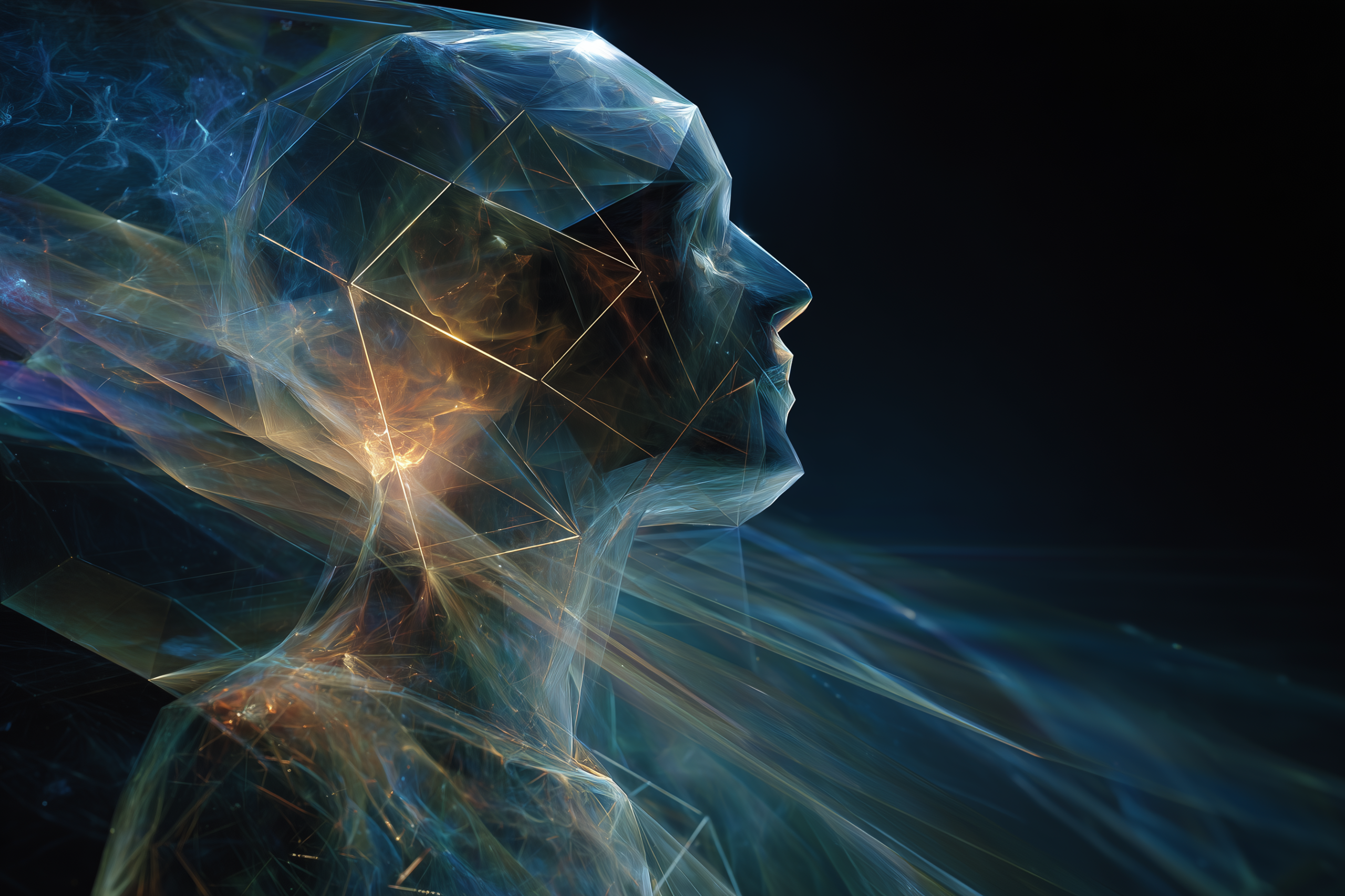The difference between accidental breakthroughs and systematic transformation is having a protocol.
Over the past week, we’ve explored how consciousness and environment exist in a continuous feedback relationship—and how you can participate in this relationship consciously rather than randomly.
We explored how to systematically learn from any outcome using the Backprop Loop (Day 12), discovered how your brain filters reality through CNN-like processing systems (Day 13), how your RAS and thalamus determine what you’re allowed to perceive (Day 14), and how neuroplasticity lets you systematically rewire these patterns (Day 15). We uncovered how individual filter upgrades create environmental feedback loops that compound exponentially—what I call Clarity Loops (Day 16). And we mapped the Four Pillars of Reality Architecture that turn accidental breakthroughs into engineered systems (Day 17).
If you’re just joining the series, don’t worry—this protocol stands on its own. You’ll be guided step-by-step through designing and building your architecture from the ground up.
But understanding the architecture isn’t the same as building it.
Today, we’re moving from blueprint to construction. This is the complete implementation protocol that transforms everything we’ve explored into systematic practice. Not theory. Not inspiration. A step-by-step system you can begin immediately to engineer your own breakthrough transformation.
This protocol works because it’s based on how consciousness and environment actually interact, not on how we wish they worked.
By the end of this article, you’ll have everything you need to build your first systematic Reality Architecture—and the meta-skills to shape environments that support lasting evolution in any area of your life.
(Throughout this article, ‘environmental feedback’ refers to the real-world responses your upgraded filters trigger—what your world mirrors back when you change.)
Why Most Transformation Efforts Plateau (And How This Protocol Prevents It)
Before diving into implementation, it’s crucial to understand why most people’s transformation attempts fail or plateau. The Reality Architecture Protocol is specifically designed to prevent these failure patterns.
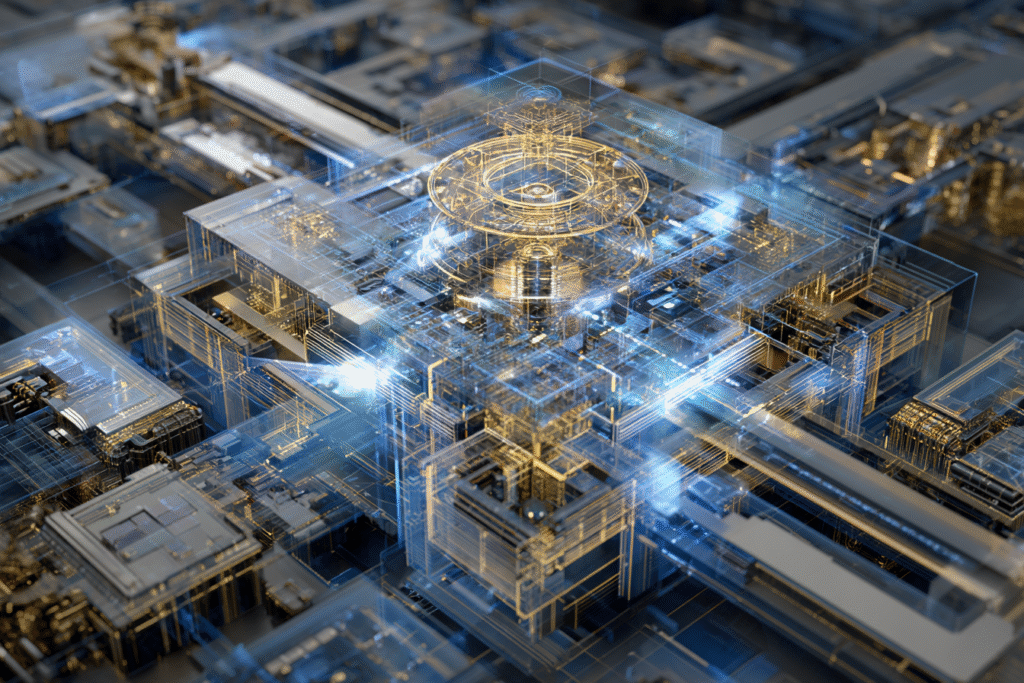
The Insight Trap
Collecting frameworks without implementation systems
- People optimize for understanding rather than environmental feedback
- Breakthrough moments don’t translate into systematic change
- Built-In Correction: Focuses on environmental responses, not internal insights
The Internal Limitation
Treating change as purely personal work
- Missing the consciousness-environment feedback dynamics that create compound effects
- Growth follows a straight line instead of unlocking compounding results
- Built-In Correction: Designs your context to respond and evolve with you from day one
The Linear Fallacy
Expecting consistent results from consistent effort
- Abandoning systems during the crucial build phase when feedback is minimal
- Not understanding exponential timeline dynamics
- Built-In Correction: Sets appropriate expectations and provides early feedback indicators
The Isolation Problem
Working on individual improvements without integration
- Missing the compound effects that create systematic transformation
- Changes don’t reinforce each other across life domains
- Built-In Correction: Establishes a developmental ecosystem that connects improvements across contexts
This protocol succeeds because it operates on how transformation actually works: through systematic consciousness-environment feedback engineering, not willpower or isolated personal development.
Build Your System: The 30-Day Reality Architecture Protocol
This isn’t a 30-day challenge—it’s a 30-day construction project. You’re designing and building integrated systems that will continue developing for months and years to come. The timeline offers structure for the initial build phase, after which the system becomes self-reinforcing.
These timeframes are guidelines, not absolutes. Some stages may move quickly, others more slowly—but what matters is that you keep building.
Pre-Implementation Setup (Days 1-3): Foundation Architecture
Before beginning construction, you need architectural clarity and the right tools. This phase determines the quality of everything that follows.
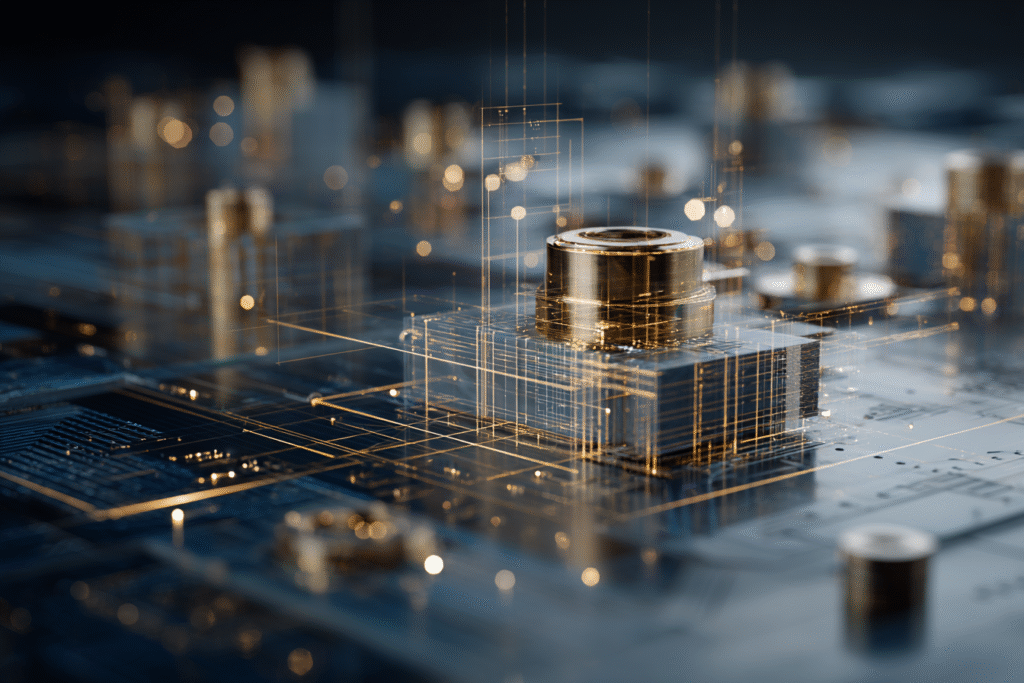
Day 1: Architectural Assessment
Using the SF² (Strategic Filter Selection Framework) from our Four Pillars exploration, identify your highest-leverage development opportunity:
Filter Audit Process:
- Map your current automatic responses across problem-solving, opportunity recognition, resource perception, and collaboration dynamics
- Identify which limiting pattern creates the most environmental resistance
- Choose the single upgrade that would generate the strongest environmental feedback
Target Definition:
- From: [Current automatic pattern]
- To: [Specific upgraded pattern]
- Environmental Signal: [Measurable external change that indicates success]
Example: From automatic problem-analysis to automatic solution-detection, with the environmental signal being “colleagues start bringing me more challenges because they experience me as possibility-focused.”
Day 2: Environmental Design Blueprint
Design your physical, digital, and social environments to support systematic change:
Physical Architecture:
- Remove environmental triggers that activate old patterns
- Install environmental cues that prompt new pattern practice
- Create dedicated spaces for Reality Architecture work
For example: a specific chair or area for reflection and filter practice, or a whiteboard for tracking environmental feedback patterns
Digital Architecture:
- Curate information diet to reinforce target patterns
- Set up tracking systems to log real-world signals
- Remove digital inputs that strengthen limiting filters
For example: replace news feeds focused on problems with innovation newsletters, or set phone reminders for filter practice during key interaction times.
Social Architecture:
- Identify accountability partners who understand systematic development
- Design feedback mechanisms with trusted collaborators
- Plan low-stakes practice opportunities for filter upgrades
For example: practice new filters during casual coffee conversations before applying them in high-stakes meetings.
Day 3: Implementation Tool Setup
Establish the measurement and optimization tools you’ll use throughout the build:
- Daily Tracking System: Simple metrics for environmental feedback
- Weekly Review Framework: Questions for detecting pattern changes
- Optimization Protocol: How you’ll adjust based on real-world feedback
The Backprop Loop from our earlier exploration (Day 12) (notice signal → trace gradient → adjust) becomes your daily optimization engine throughout this process.
The 30-Day Build Phase (Days 4-30): Systematic Construction
This phase combines neuroplastic filter retraining with environmental feedback engineering—building capacity step by step.
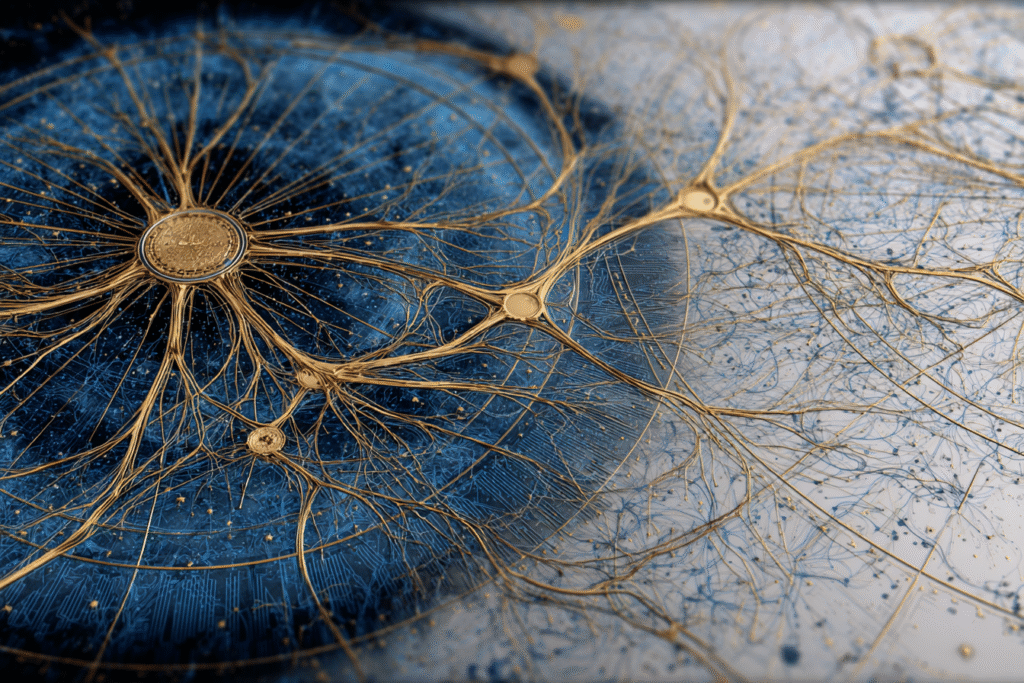
Week 1 (Days 4-10): Filter Installation
Apply the FILTER 2.0 method for neuroplastic precision:
Daily Practice Structure:
- Morning (5 minutes): Neuroplastic programming through detailed visualization of successful filter application
- Throughout day: Conscious filter practice in 3-5 interpersonal contexts
- Evening (3 minutes): Log real-world responses using your tracking system
Week 1 Focus: Establishing basic neural pathways for your target filter while beginning to observe environmental responses.
- Frequency: Practice new filter minimum 15 times per day in micro-contexts
- Imagination: Visualize how others respond when you show up with your newly tuned lens of interaction
- Linking: Connect filter practice to meaningful outcomes you want to create
- Targeting: Focus on situations where environmental feedback is most immediate
- Evaluation: Document real-world shifts in how others respond—not just how it feels internally
- Recalibration: Adjust approach based on the real-world responses you’re observing
Week 1 Milestone: New filter should feel less effortful and you should notice initial micro-changes in how others respond to your upgraded engagement patterns.
Apply the Backprop Loop daily: notice how your filter applications create environmental responses, trace which approaches generate the best feedback, and adjust your technique accordingly.
Week 2 (Days 11-17): From Feedback to Forward Momentum
As your filter begins to feel more natural, optimize for environmental response quality:
Signal Detection Enhancement: Develop sensitivity to subtle environmental feedback patterns
- Track micro-changes in how others engage with you
- Notice shifts in opportunities or information being shared
- Document patterns you might otherwise dismiss as coincidental
Feedback Loop Acceleration:
- Create real-time feedback systems (frequent collaborator check-ins)
- Reduce lag time between filter application and feedback recognition
- Choose practice environments that yield the clearest mirror signals
Week 2 Milestone: Subtle external responses should be detectable, even if subtle—colleagues asking different types of questions, people responding more positively to your input, or opportunities being mentioned in conversations that wouldn’t have surfaced before. If you’re not seeing these, recalibrate your filter application frequency or revisit your environmental design.
Use the Backprop Loop for optimization: notice which contexts produce the strongest environmental feedback, trace what makes those situations different, and adjust your practice schedule to include more of those high-feedback opportunities.
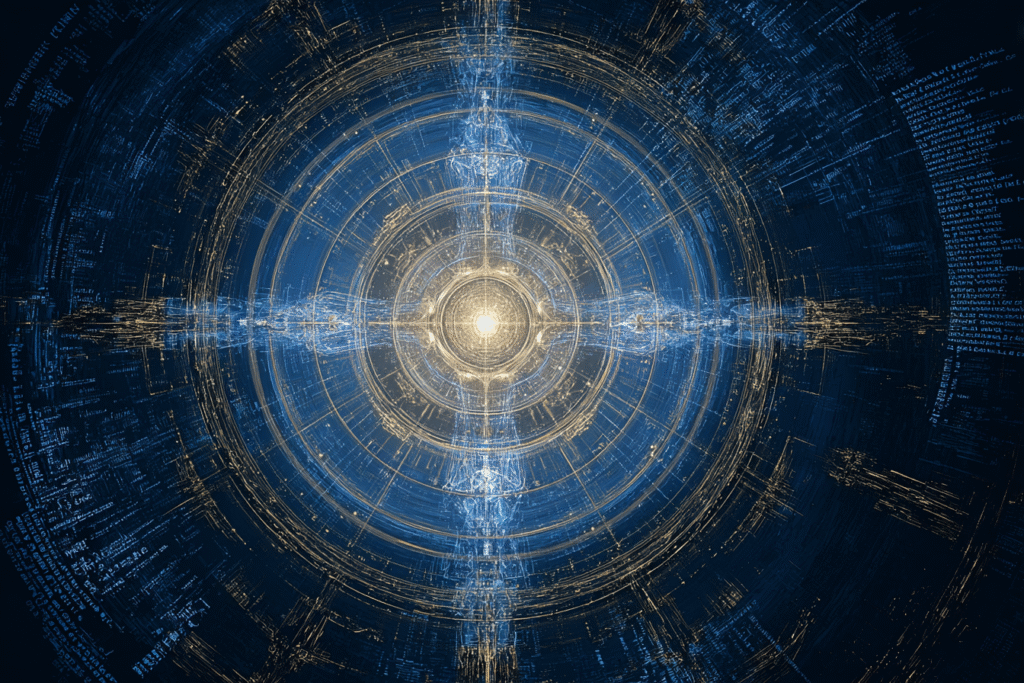
Week 3 (Days 18-24): Integration Architecture
Now you’ll begin turning isolated improvements into a synergistic system:
Cross-Domain Application: Apply successful filter patterns to multiple contexts
- Professional applications of personal filtering insights
- Personal applications of professional breakthroughs
- Creative applications of analytical filtering patterns
Secondary Filter Integration: Add complementary filters that amplify environmental responses
- If solution-detection is working, add opportunity-recognition
- If collaboration filters are generating feedback, add innovation filters
- Design synergistic rather than isolated improvements
Week 3 Milestone: Your primary filter should be operating consistently across multiple life domains, and you should see clear synergistic effects between your primary and secondary filters.
Apply the Backprop Loop across domains: notice where cross-domain applications work best, trace the patterns that create synergy between filters, and adjust your integration strategy based on actual compound effects.
Week 4 (Days 25-30): System Automation
Transform conscious practice into automatic background processing:
Automation Indicators:
- Filter application feels natural rather than effortful
- Environmental responses are consistent and measurable
- Others comment on changes in how you approach challenges or opportunities
Advanced Integration:
- Design your project selection criteria to support continued filter development
- Create relationship patterns that provide mutual Reality Architecture acceleration
- Structure routines that reinforce multiple filter upgrades simultaneously
System Optimization: In these final days, begin refining the routines and environmental designs that support your now-automated filters. Fine-tune your schedule, cues, and project inputs so they continuously reinforce your architecture without conscious effort.
Week 4 Milestone: Your Reality Architecture system should be largely self-reinforcing, with automatic filter application and visible external response loops.
Use the Backprop Loop for automation assessment: notice when filter application feels effortless versus forced, trace what environmental conditions support automation, and adjust your routines to maximize those supportive conditions.
Beyond the Build (Days 31+): Scaling Your Reality Architecture
After 30 days of systematic construction, you’ll have a functioning Reality Architecture system in place. Now you can focus on scaling and sophistication.
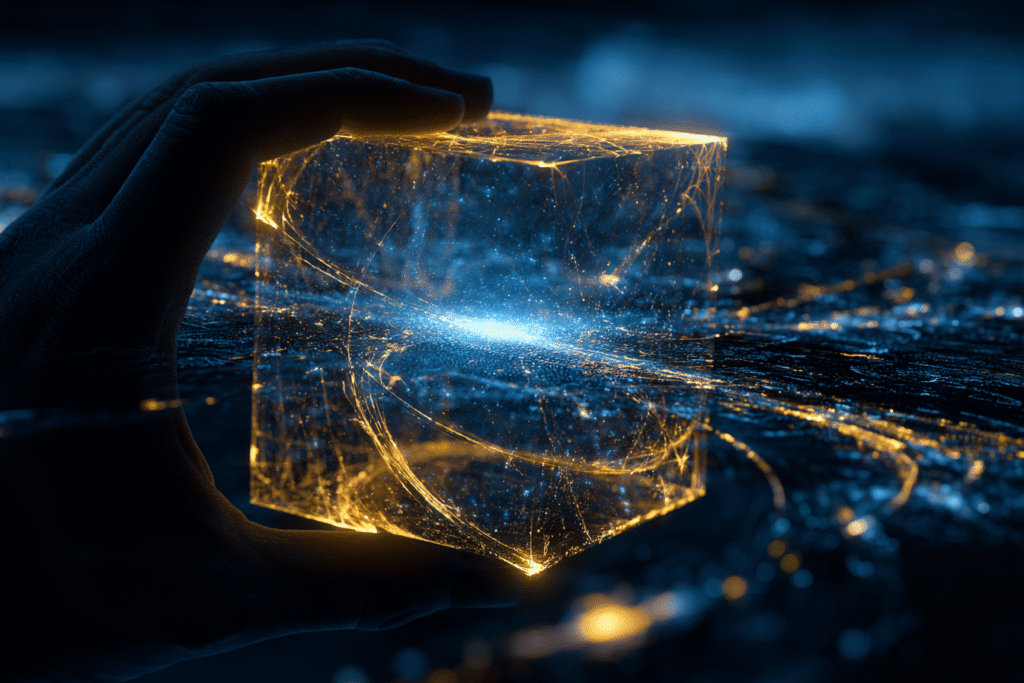
Maintenance Foundation
It’s crucial to continue reinforcing your newly built Reality Architecture over time. Neural pathways need regular activation to stay strong, and under stress, it’s easy to slip back into familiar reflexes. Watch for signs of regression—old habits resurfacing, external cues becoming less responsive, or noticing that your upgraded responses take more conscious effort than before.
Months 2-3: Multi-Filter Systems
Filter Stacking Strategy
- Primary filter: Your highest-leverage upgrade (now automated)
- Secondary filter: Amplifies environmental responses from primary
- Tertiary filter: Supports implementation and maintenance of both
Environmental Cascade Design
Engineer your environment so improvements in one area automatically create supportive conditions across all other areas.
For instance, a creative breakthrough at work might prompt new conversations at home, opening space for deeper relational growth.
Months 4-6: Domain Scaling
Apply Reality Architecture principles to additional life domains:
- Relationship dynamics and social connections
- Creative projects and innovation processes
- Leadership and collaborative effectiveness
- Long-term strategic thinking and opportunity creation
Months 6+: Meta-Skill Development
Develop the capability to design new Reality Architecture systems consciously:
- Understand underlying principles that make any system effective
- Recognize opportunities for consciousness-environment feedback engineering in new domains
- Create breakthrough methodologies rather than just applying existing techniques
Case Study: Building a Reality Architecture in 30 Days
Let’s walk through a complete worked example to demonstrate how the protocol functions in practice.
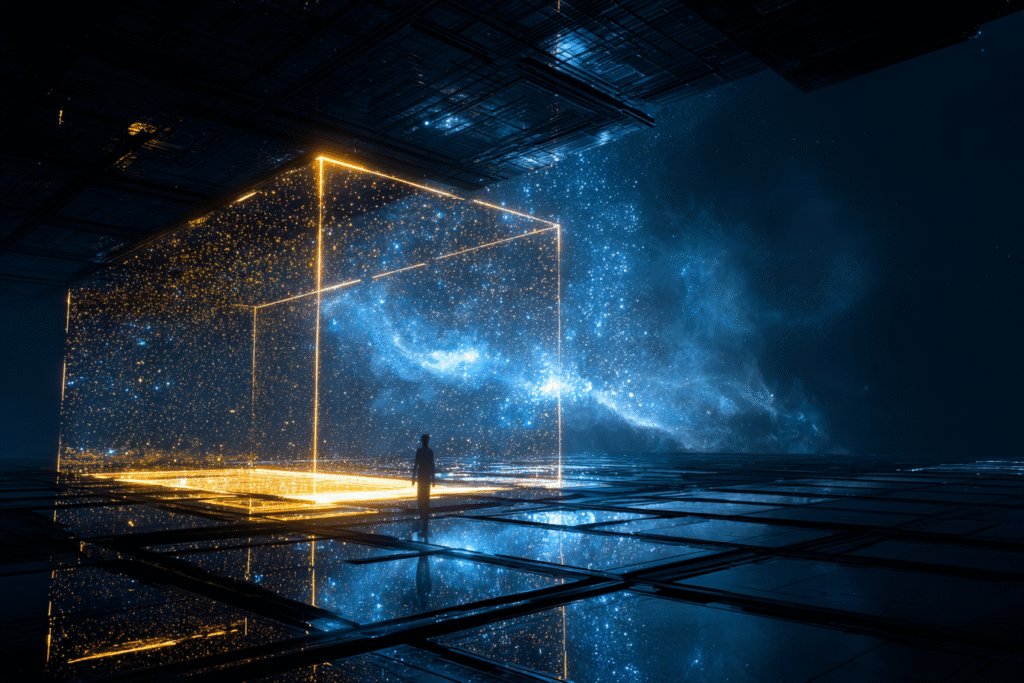
Pre-Implementation Setup
- Target: Shift from default problem-analysis to solution-seeking.
- Signal: Colleagues begin consulting you more often for ways forward.
- Environment: Optimize workspace for ideation, shift digital intake toward innovation, and add weekly feedback check-ins.
Week 1: Filter Installation
- Practice: Respond to challenges by asking, “What would solving this create?” and “What haven’t we tried yet?” Use in 15+ daily micro-moments.
- Feedback: Track how others react when you lead with curiosity.
- Result: Early shifts in tone, engagement, and how colleagues interact.
Week 2: Environmental Feedback Optimization
- Signals: Colleagues bring you new types of problems. Conversations shift in tone and flow. You start spotting possibilities instead of roadblocks.
- Acceleration: Get feedback in real-time. Ask a trusted collaborator to reflect how your approach is landing.
Week 3: Integration Architecture
- Cross-Application: Extend solution-seeking to relationships, creativity, and strategy.
- Stacking: Add an “opportunity-recognition” filter: “What does this situation make possible?”
Week 4: System Automation & Adaptive Scaling
- Automation: Solution-seeking becomes your default. Others describe you as someone who finds ways forward.
- Integration: Shape your routines and projects to amplify the pattern.
Result after 30 Days: Your reality now reflects your filter. Problems become possibility fields. And people mirror back your new way of thinking—often before you notice it yourself.
Troubleshooting Common Implementation Challenges
“Environmental feedback seems minimal or slow”
Diagnosis: Usually indicates filter application frequency is too low or contexts aren’t interpersonal enough.
Solution: Increase practice frequency to 20+ micro-applications daily. Focus specifically on human interaction contexts where feedback is most immediate.
Timeline adjustment: Real-world signals may take 2–3 weeks to become clearly noticeable. Don’t abandon the system during this crucial build phase.
“New filter feels forced or unnatural”
Diagnosis: Normal neuroplastic resistance. Your brain prefers established neural pathways.
Solution: Connect filter practice to meaningful outcomes you genuinely care about. Start with lower-stakes situations where success feels more accessible. Remember that naturalness emerges after 3-4 weeks of consistent practice.
Acceleration strategy: Increase emotional linking—connect filter upgrades to values and identity elements that matter deeply to you.
“I keep reverting to old patterns under stress”
Diagnosis: Stress activates established neural pathways before new ones are fully automated.
Solution: Practice new filters specifically during calm states first. Use Backprop Loop to identify stress triggers and design environmental modifications that reduce activation of old patterns.
System upgrade: Add stress-response filter training as secondary development focus.
“Changes feel isolated rather than integrated”
Diagnosis: Missing the cross-domain application and compound effect design elements.
Solution: Systematically apply successful filter patterns to multiple life domains. Design environmental changes that reinforce improvements across all areas simultaneously.
Architecture upgrade: Focus more on environmental cascade effects where improvements automatically create conditions for further improvements.
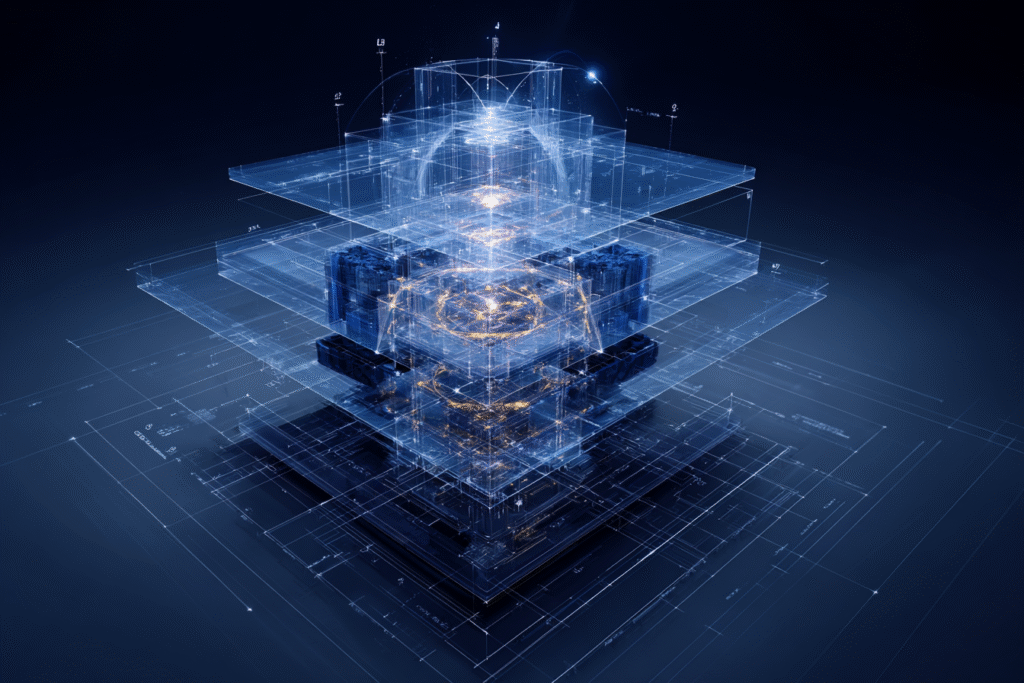
Success Validation: System Performance Indicators
Your Reality Architecture is functioning when:
Environmental Indicators
- Others spontaneously seek your input in areas related to your filter upgrades
- Opportunities and information flow to you differently than before
- Colleagues describe noticeable changes in how you engage with challenges
- More complex or interesting projects are offered to you
Internal Indicators
- Filter application has become unconscious default rather than conscious effort
- Cross-domain pattern recognition improves significantly
- Old reactive patterns trigger less frequently and with less intensity
- You feel more energized by challenges rather than drained
Systematic Indicators
- Your system now produces real-time signals without needing constant reinforcement
- Multiple life domains improve simultaneously without additional effort
- You develop the meta-skill of designing new Reality Architecture systems
- Others ask for guidance on developing similar systematic capabilities
Integration Indicators
- Your project selection, relationship patterns, and daily routines automatically support continued development
- Improvements create conditions for further improvements across domains
- You’re building the capability to help others design their own Reality Architecture systems
Scaling Conscious Design
By this point, your Reality Architecture is more than a personal system—it’s a foundation. But the most powerful architectures don’t end at the self. They ripple outward.
Each person who masters Reality Architecture becomes a node for collective transformation—your individual system becomes the foundation for designing shared reality architectures.
Once your feedback systems are self-sustaining, you’ll begin seeing opportunities to extend this clarity into your relationships, teams, and even broader communities.
That’s where the real transformation begins.
Advanced Applications: Beyond Individual Transformation
Once your system is generating consistent environmental feedback, a shift begins. You no longer think in terms of personal improvement—you think in ecosystems, in ripple effects, in shared architecture.
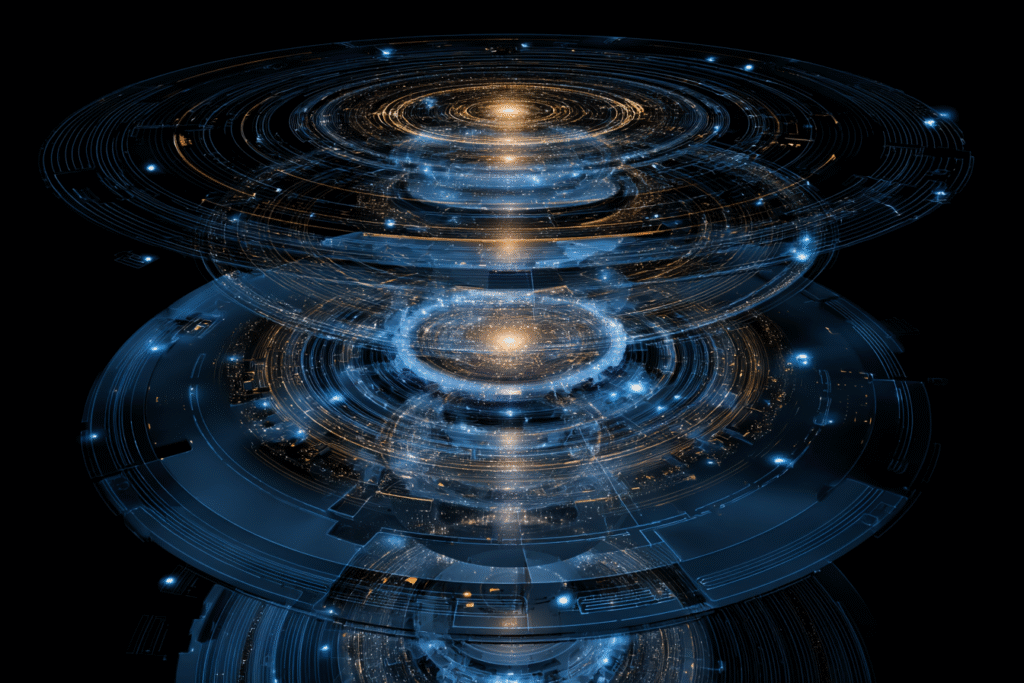
These are the next frontiers where you can begin to apply this protocol:
- Organizational Reality Architecture
Apply these principles to teams and company culture, creating systematic transformation at group scales. - Relationship Reality Architecture
Design mutual Clarity Loops with others, creating shared environments that accelerate development for everyone involved. - Creative Reality Architecture
Engineer environmental feedback systems that systematically enhance innovative thinking and breakthrough problem-solving. - Leadership Reality Architecture
Develop systematic approaches to creating environments where others’ best capabilities emerge naturally. - Community Reality Architecture
Scale these principles to social change, creating systematic transformation beyond individual or organizational contexts.
These advanced applications emerge naturally as your foundational systems mature. Master your first Reality Architecture with precision before expanding to larger scales.
That foundation becomes your launchpad—not just for personal evolution, but for collective transformation.
Your Implementation Starts Now
The Reality Architecture Protocol isn’t just theory—it’s a documentable, systematic self-construction project.
This Week: Complete the Pre-Implementation Setup
- Day 1: Choose your highest-leverage filter upgrade using SF² framework
- Day 2: Design environmental architecture across physical, digital, and social domains
- Day 3: Set up tracking systems and optimization protocols
Next 30 Days: Execute the systematic build using the week-by-week progression outlined above.
Ongoing: Continue developing your Reality Architecture systems across multiple domains and scales.
Remember: You’re not just improving yourself. You’re learning to consciously participate in the feedback relationship between consciousness and reality. Every filter you upgrade, every environmental feedback loop you optimize, every systematic transformation you engineer contributes to expanding what becomes possible—not just for you, but for everyone whose life you touch.
Your reality is already responding to your consciousness. The question is whether you’ll participate consciously and systematically, or continue letting it happen randomly.
Choose Clarity. Design Consciously. Architect Your Reality.
Your systematic transformation begins today.
In the coming days, we’ll explore the advanced consciousness applications—how individual Reality Architecture integrates with manifestation science, electromagnetic coherence, and systematic reality creation at scales beyond personal transformation.
See you in the next insight.


